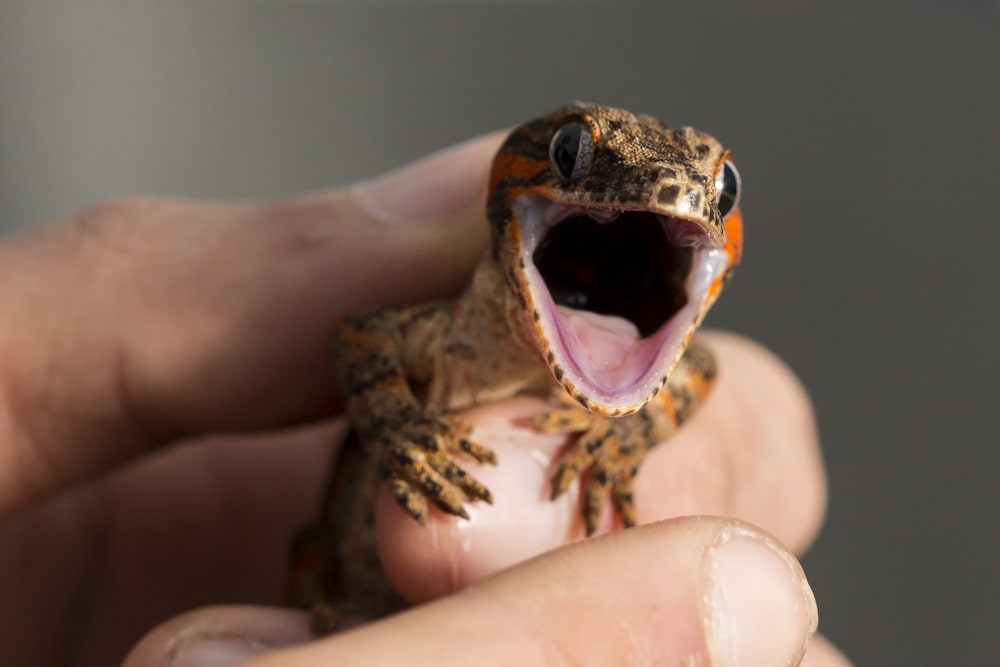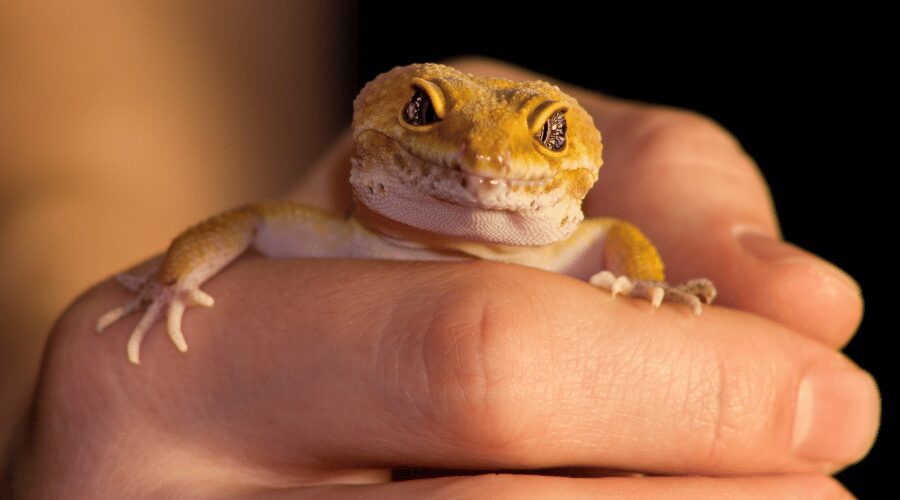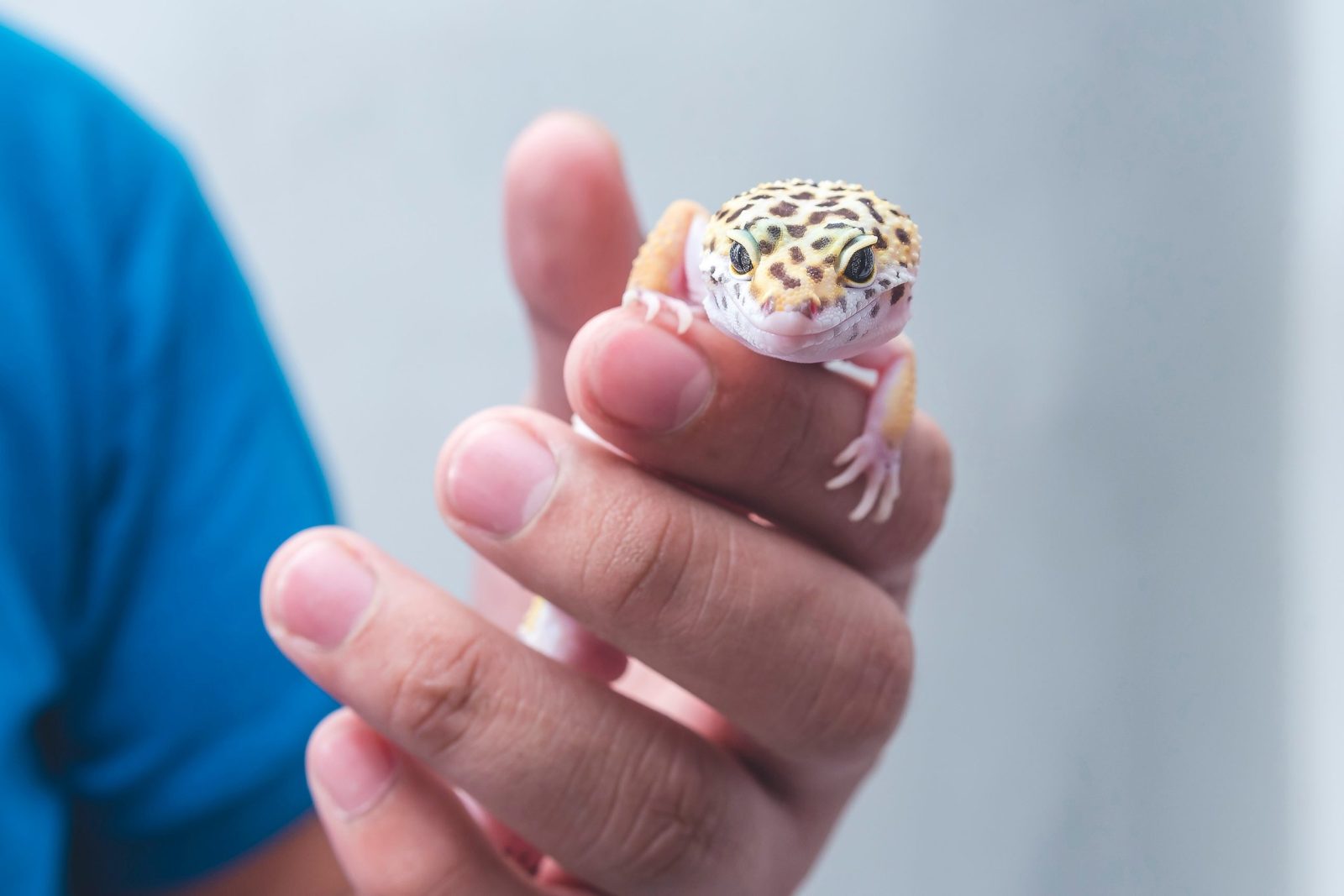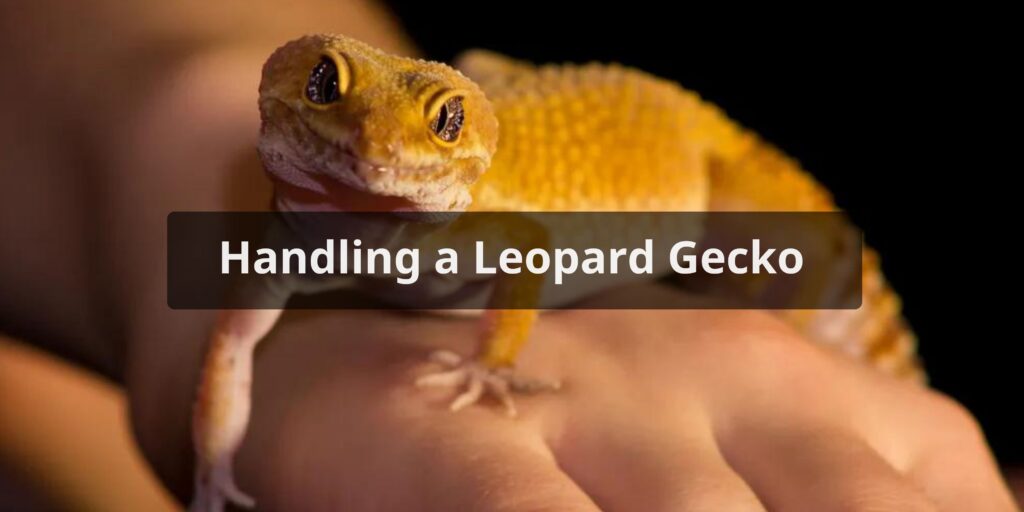Leopard geckos make great pets for reptile enthusiasts. They are relatively easy to care for as long as their basic husbandry needs are met. However, handling any reptile requires some knowledge and care to ensure the health and safety of both animal and keeper. This guide will provide tips on the proper techniques for handling a leopard gecko safely and minimize stress.
Handling a Leopard Gecko

When it comes to handling a leopard gecko, there are a few key things to keep in mind:
Prepare Properly
- Wash your hands thoroughly before and after handling your leopard gecko. This removes oils and fragrances that can stress the animal.
- Trim your fingernails to avoid scratching the gecko.
- Move slowly and gently when first reaching into the enclosure. Avoid making sudden movements that may startle the gecko.
- Handle the gecko for short periods, no more than 10-15 minutes at a time. This prevents excessive stress to the animal.
Support the Body
- Place one hand under the gecko’s torso near the front legs, and support the rear legs and tail with the other hand.
- Make sure to support the full weight of the gecko’s body. Dropping even a short distance can injure them.
- Cradle smaller geckos gently between both hands.
- Never pick up a leopard gecko by the tail! This can detach the tail or cause serious spinal injury.
Control the Environment

- Handle your leopard gecko in a small, enclosed space without high places to fall from. A large plastic tub works well.
- Do not handle after feeding, when lethargic, or during shedding cycles. This stresses the animal.
- Keep handling sessions during the day and at moderate temperatures between 75-85°F. Avoid temperature extremes.
- Keep other pets away during handling. Dogs, cats, and other reptiles can injure or cause extreme fear.
Read the Body Language
Pay attention to the gecko’s behavior during handling. Signs of stress include:
- Closing eyes for extended periods
- Gaping mouth breathing
- Wriggling, twisting, or trying to escape
- Wagging or twitching the tail
- Biting (which is rare, but possible if threatened)
If you notice these behaviors, gently return the gecko to its enclosure to avoid over-stressing it.
Be Gentle
- Hold the gecko securely but do not squeeze or restrict movement.
- Ensure your grip is soft but firm enough to prevent falls.
- Move slowly and steadily. No sudden jerky motions.
- Do not pull on the limbs or tail. Allow the gecko to move freely.
Benefits of Handling

With proper technique, regular handling provides many benefits including:
- Socialization – Geckos become used to human contact and associate it with safety. This reduces fear and stress.
- Health checks – Gentle handling lets you monitor the gecko’s body for signs of injury, illness, or parasite infestation.
- Muscle tone – Handling provides gentle exercise which improves muscle strength and coordination.
- Bonding – Frequent, brief handling establishes trust and helps form a connection with your gecko.
Conclusion
Handling any reptile requires care and common sense, but leopard geckos are a hardy, tolerant species well-suited for regular interaction. By following proper handling techniques, keeping sessions brief, reading the gecko’s signals, and maintaining calm control of the environment, you can enjoy the experience of handling your leopard gecko and promote its health and wellness through this regular interaction. Always prioritize the gecko’s comfort level and safety above your desire to handle the animal. With time and patience, a strong bond of trust can form between keeper and gecko.
FAQs About Handling A Leopard Gecko
How do I safely pick up and hold a leopard gecko?
To safely pick up and hold a leopard gecko, approach calmly, scoop it gently from below with your hand, supporting its body. Avoid sudden movements and never grab the tail. Hold it close to your body, allowing it to walk from hand to hand if it feels comfortable.
Are there specific do’s and don’ts for handling geckos?
Do handle your gecko with clean hands, move slowly, and be gentle. Don’t squeeze, grab the tail, or force handling. Always wash your hands before and after. Respect your gecko’s boundaries, and if it resists handling, give it time to acclimate.
Can handling my gecko too much stress it out?
Yes, excessive handling can stress geckos. Start with short sessions and gradually increase duration and frequency. Pay attention to signs of stress, like tail wagging or hissing. If your gecko shows stress, reduce handling. Every gecko is unique, so monitor their comfort level.
What should I do if my gecko drops its tail while being handled?
If your gecko drops its tail while being handled, don’t panic. It’s a defense mechanism. Ensure the wound is clean, and consult a veterinarian if needed. Tail loss doesn’t harm the gecko’s health but may affect its appearance.
Is it safe to let children handle leopard geckos?
Supervised handling by children can be safe, but it requires caution. Teach children to be gentle and patient. Always have an adult present during handling. Some geckos may not tolerate handling well, so assess your gecko’s temperament before allowing children to handle it.



